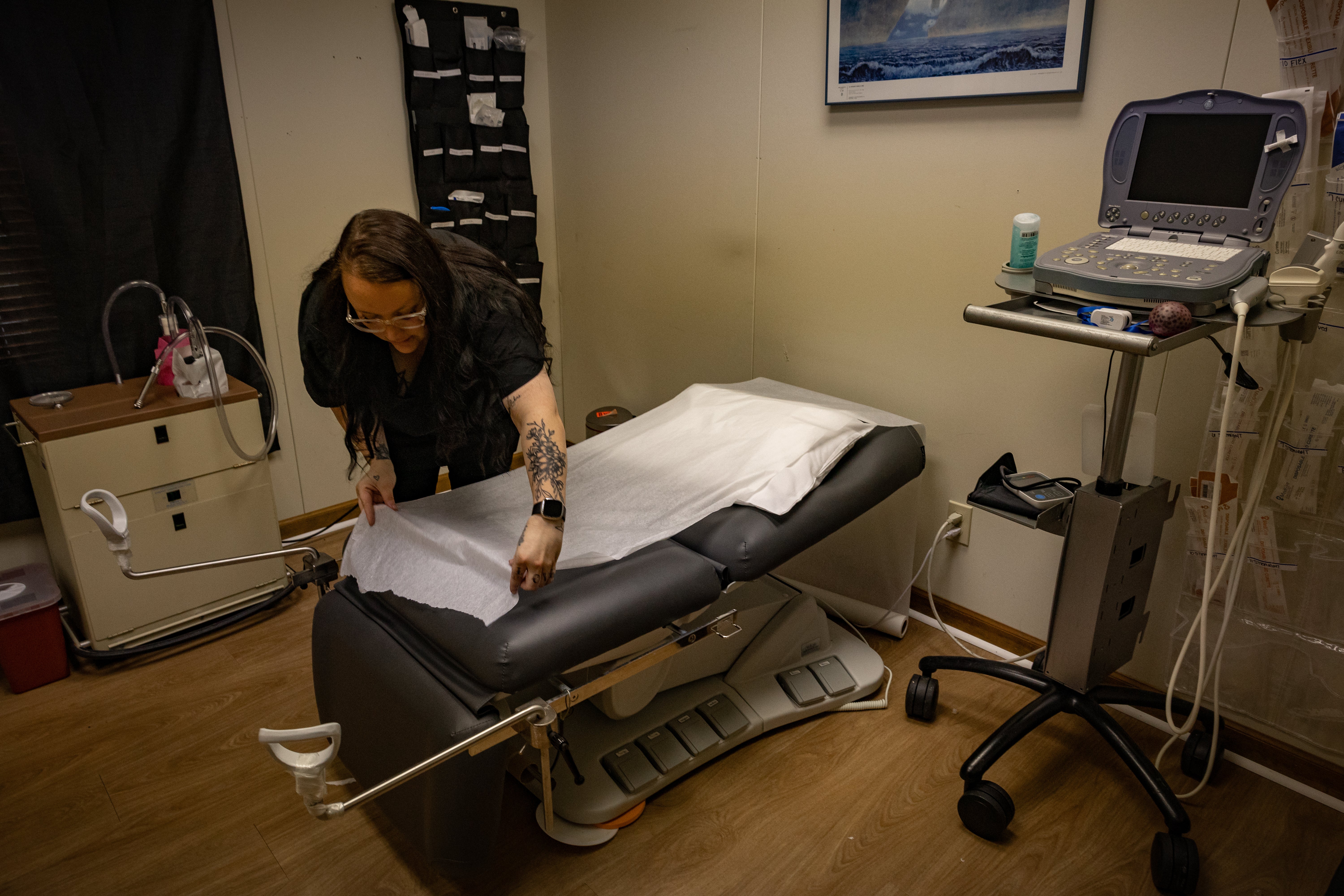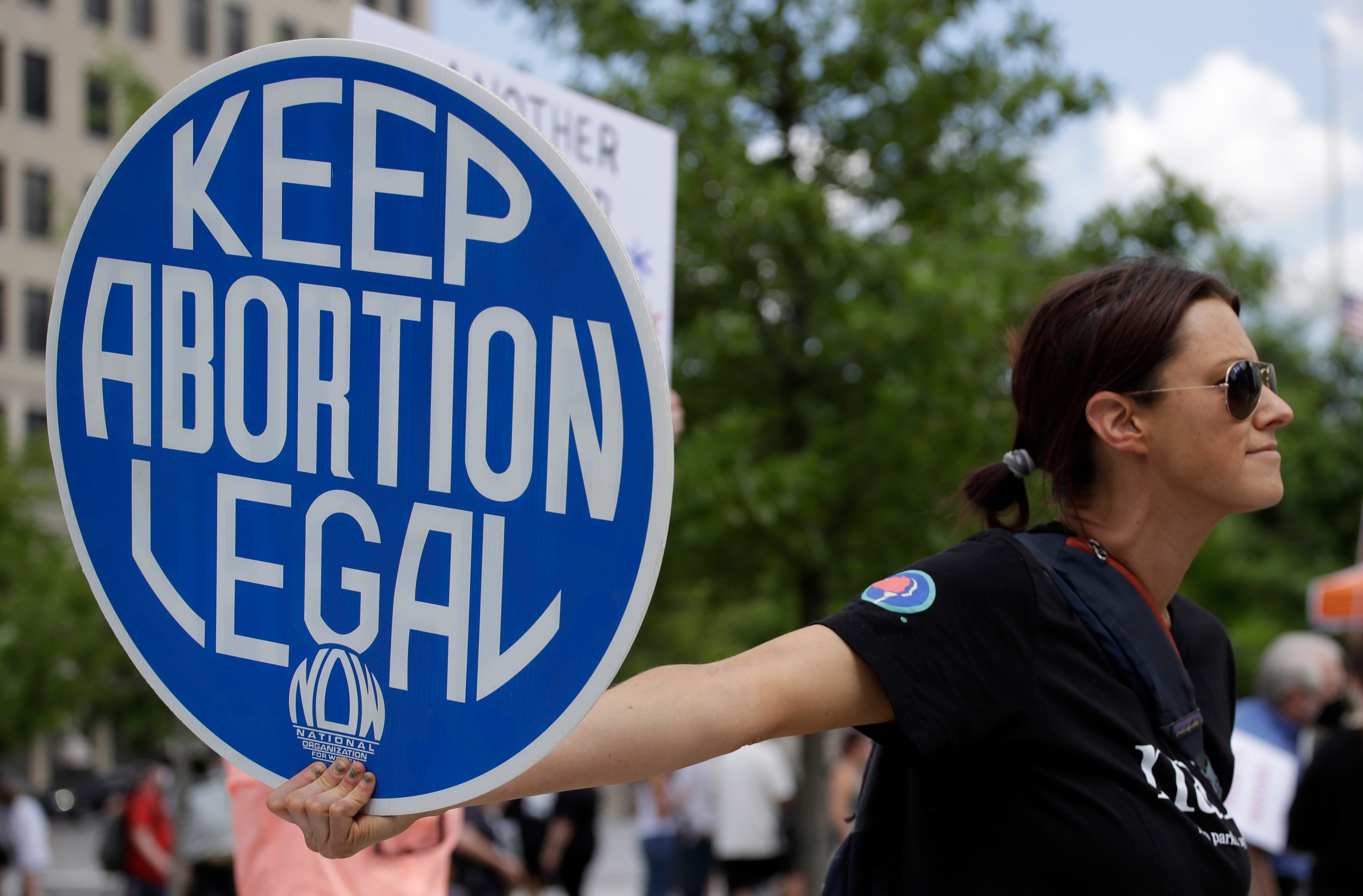I wasn’t able to get an abortion. Now I’m raising my rapist’s baby: One woman’s devastating story highlighting the reality of reproductive care in America
‘I love my child. But if I could go back in time and get an abortion, I would 100 per cent of the time,’ says Melinda. Kelly Rissman reports on a story that exposes the hurdles women faced before the Supreme Court’s Dobbs decision in June 2022
This story is part of an investigative series and new documentary, The A-Word, by The Independent examining the state of abortion access and reproductive care in the US after the fall of Roe v Wade.
For more than a decade, “Melinda” has raised a child she never wanted — a child that was the product of rape.
“I love my child. But if I could go back in time and get an abortion, I would 100 per cent of the time,” she told The Independent.
Melinda, whose name was changed at her request to protect her child, said her perspective often “trips people up,” but it doesn’t mean she hates her child — she just wishes she’d been able to get an abortion.
While she technically could have accessed the procedure in her home state of Tennessee at the time, it wasn’t really an option. Significant barriers stood in her way: Being a victim of rape, not having money, and reeling from the shock tactics of a fake clinic.
Her story exposes the hurdles that pregnant women faced more than a decade before the Supreme Court’s Dobbs decision in June 2022 changed the landscape of abortion in the US.
While anti-abortion rhetoric has swirled for decades, it spread like wildfire during Donald Trump’s presidency. Not only was his vice-president outspoken abortion opponent Mike Pence, but he also appointed half of the justices who voted to reverse Roe. In 2021, Ohio Senator JD Vance — Trump’s 2024 running mate — called rape “inconvenient” while praising Texas’s abortion ban.
Since then, state-level bans on the procedure have swept across the country. Now, Tennessee has no clinics at all, due to the state’s ban that went into effect on 25 August, 2022.
Last year, 170,000 pregnant women traveled to other states to get the procedure due to bans. Back then, traveling from her small town to another city — let alone another state — was out of reach for Melinda.

She never wanted to be a mother and hoped to pursue a career in space systems operations in the air force. But her dreams changed. After joining the military, she was sent overseas, where her supervisor repeatedly raped her — and she became pregnant at 20 years old.
She had told supervisors about her experience with him, but they warned that if she were to formally report the sexual assault, she would be put on “light duty,” meaning she would be stripped of her ability to carry a gun — a move that is considered a “career ender.”
“Terrified” of the repercussions, she continued seeing him. She has been in therapy for years trying to “get to the core of what I was thinking at that time.”
Weeks after the end of her tour, she “didn’t feel right” and returned to her parents’ home in Tennessee where she took a pregnancy test which solidified the reality she had already feared.
She delivered the news to her supervisor-slash-rapist, who she had kept in “constant communication with,” over AOL Instant Messenger. He didn’t believe her, and insisted she get proof “that I wasn’t going to ‘baby-trap’ him or lie to him,” she recalled.
So she went to her local doctor, who confirmed that she was pregnant.
After considering drinking “gallons and gallons” of orange juice to try to self-induce an abortion, Melinda decided to rely on professionals. She searched online for local abortion providers, but only three popped up.
The nearest Planned Parenthood was 100 miles away. When she called, Planned Parenthood told her the procedure would cost $500 — “which I did not have” — and would require two trips, due to the state’s 48-hour waiting period requirement. The law, which is still in place today, mandates a two-day wait between consulting with a doctor and getting the procedure.
Since she didn’t have the money or a car, Planned Parenthood was not an option, Melinda decided. She chose to go to a “crisis pregnancy center” closer to home. She later learned it was a fake clinic set up by faith-based anti-abortion advocates to persuade pregnant women against getting the procedure.
The dim lights and comfortable seating looked like any other doctor’s office, she recalled.
“I need confirmation that I’m pregnant and I need a ride,” she told someone wearing scrubs.
Melinda was escorted to a paper-covered exam table, where she was shown a video featuring images of “dismembered bodies of fetuses” — which were “emotionally devastating” — and was given an ultrasound as a heartbeat was played — a sound she concluded was fake because heartbeats are only audible at about 10 weeks. She was at most six weeks pregnant.

Still, her optimism prevailed. She thought: “Maybe they’ll help me out.”
In “no uncertain terms,” Melinda informed them that she wanted an abortion. “Instantly the mood changed,” she recalled.
Abortion wasn’t an option there, they said, offering her instead “support” for her to raise the child, like tickets to help buy baby formula, diapers, and once-a-week parenting classes. “Even my immature 20-year-old self knew that sounds like a trap,” she said.
She left the clinic with an ultrasound scan in her hand and Skyped the father of the child, hoping he would help her pay for an abortion if he saw the proof he had asked for. Instead, he told her he was being sent to another country, ghosted her, and blocked all forms of contact.
She now calls herself “delusional” for thinking her rapist would have helped her.
Her next best option was to ask a couple of family friends for “a ride and cover,” because she didn’t want her parents to know. Her parents were physically abusive as she was growing up and had always talked about how much they wanted grandkids.
The family friends agreed and she went to sleep that night “thinking everything is solved, my life is going to be able to continue as I planned.”
But everything changed that next morning. “You don’t have to kill your baby,” the pair told her, she recalled. Instead, they offered to adopt her baby.
Blaming what she called the “holy trinity” — a combination of abuse by her parents, living in a rural Christian town, and being in the military — she was programmed to say “yes.” She reluctantly agreed to be their surrogate — even though their betrayal made her feel “utterly broken when I was already shattered.”
She was worried about how she would hide her pregnancy from her parents, but an immediate solution presented itself: She was again assigned to a station overseas.
Six months pregnant, Melinda backed out of the adoption after learning that the adoptive parents’ personal circumstances had changed.
Out of options, she confessed to her parents, left the military, and returned to Tennessee.
Up until that point, she had convinced herself: “I just got to get through this and hand the baby over, then my life could continue.”
The baby came — along with a barrage of hardships.
She was able to stay with her parents, but their own circumstances had also changed and neither was able to support her. At some point, her father decided to move out. Melinda followed. She stayed with him for a few months but was unable to get a job before her dad kicked her out.
So, she packed up her bags and moved in with her mother, and worked while her mom watched her baby.
Living in “desperate poverty,” Melinda said the family was sharing one mattress on the floor without air conditioning and heat. For weeks, they didn’t have running water. When it got cold, she recalled shivering, despite being fully wrapped in winter clothes, “checking to see if my baby froze to death at night.”
It wasn’t until she found a job out of state that she was able to lift her family out of poverty.

Melinda, being modest, said she thinks of herself as a “decent mom” to her child, now a teenager. But she understands that she has a “controversial” take on what she would do if given a time machine.
“I love my kid, I would do anything for them,” she said. “But would I go back and get the abortion? Without question, without fail, every single time in every single universe. I would choose that.”
Her experience begs the question of what options women in a similar position to Melinda have now.
Fourteen states have a total abortion ban. Ten of them, including Tennessee, do not provide an exception in the case of rape.
The costs for traveling out of state to an abortion clinic — excluding the procedure costs — for a Tennessee woman averages $2,673, according to The Brigid Alliance, an organization that provides financial support for those in need of out-of-state abortion care.
For many in Tennessee, that amount is out of reach. One-third of women of reproductive age in Tennessee have incomes 200 per cent below the federal poverty level, according to the Guttmacher Institute.
The abortions themselves are also not cheap, with costs that increase with the gestational stage.
In-clinic abortions can cost up to thousands, according to Planned Parenthood, while the average national cost hovers around $700. More than one-third of Americans (37 per cent) do not have $400 set aside for unexpected expenses, according to the Federal Reserve. This amount is especially out of reach for Hispanic and Black women, according to KFF, a non-profit organisation focused on health policy.
Melinda was in that group that couldn’t afford the unexpected expense. When asked why she didn’t get an abortion, she explains: “Because the option exists, doesn’t mean that I can take it.”
Join our commenting forum
Join thought-provoking conversations, follow other Independent readers and see their replies
Comments
Bookmark popover
Removed from bookmarks